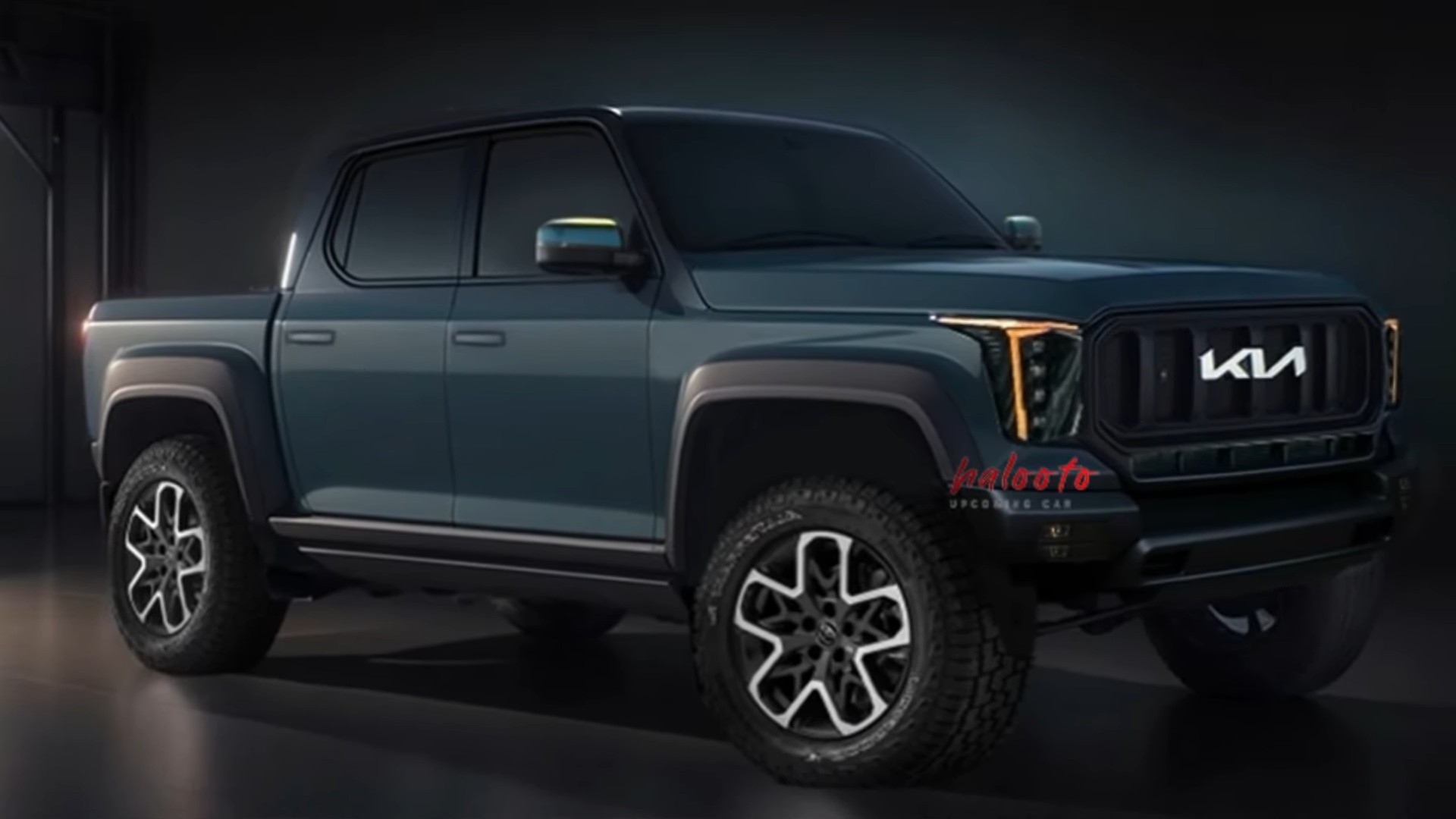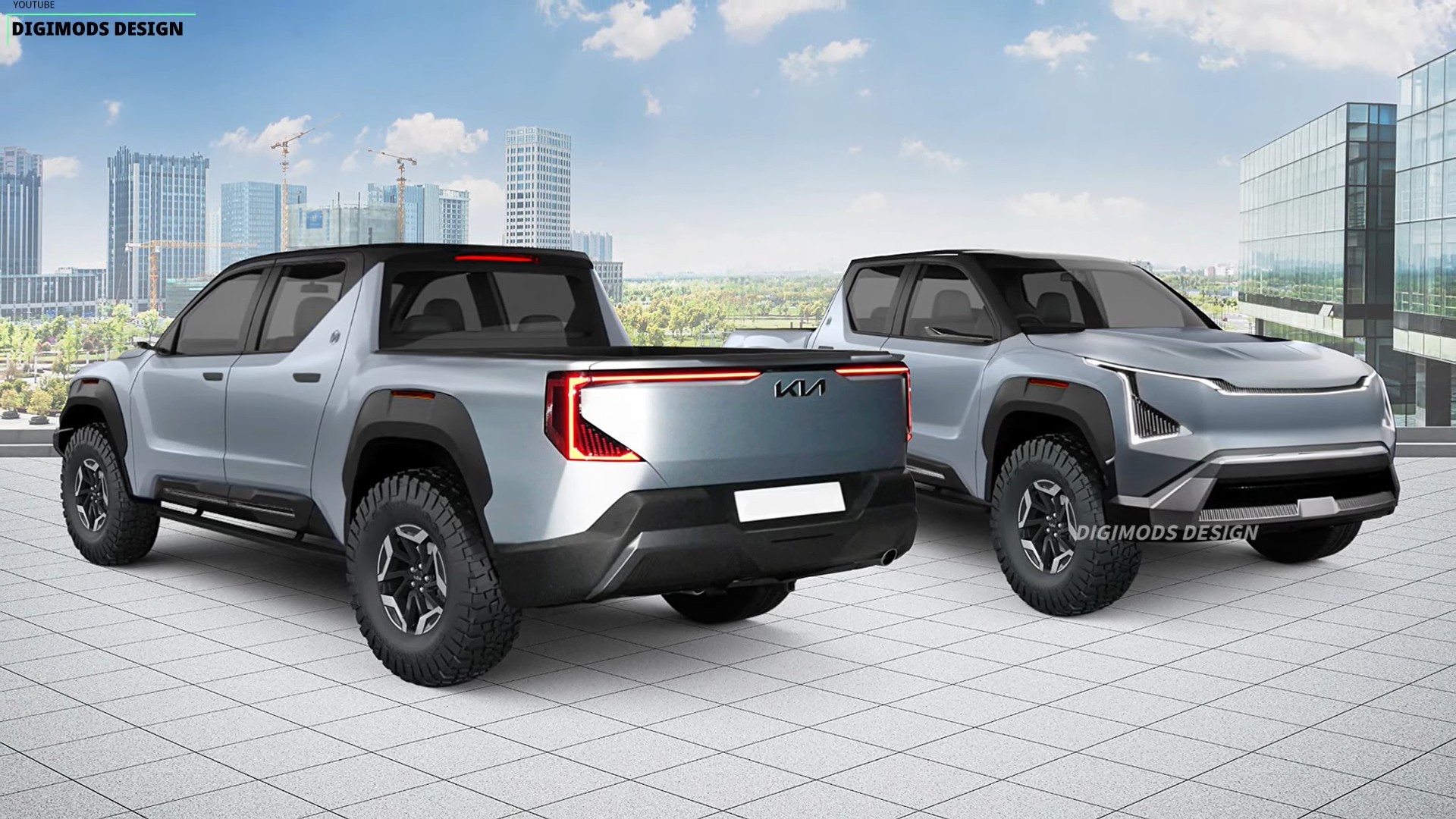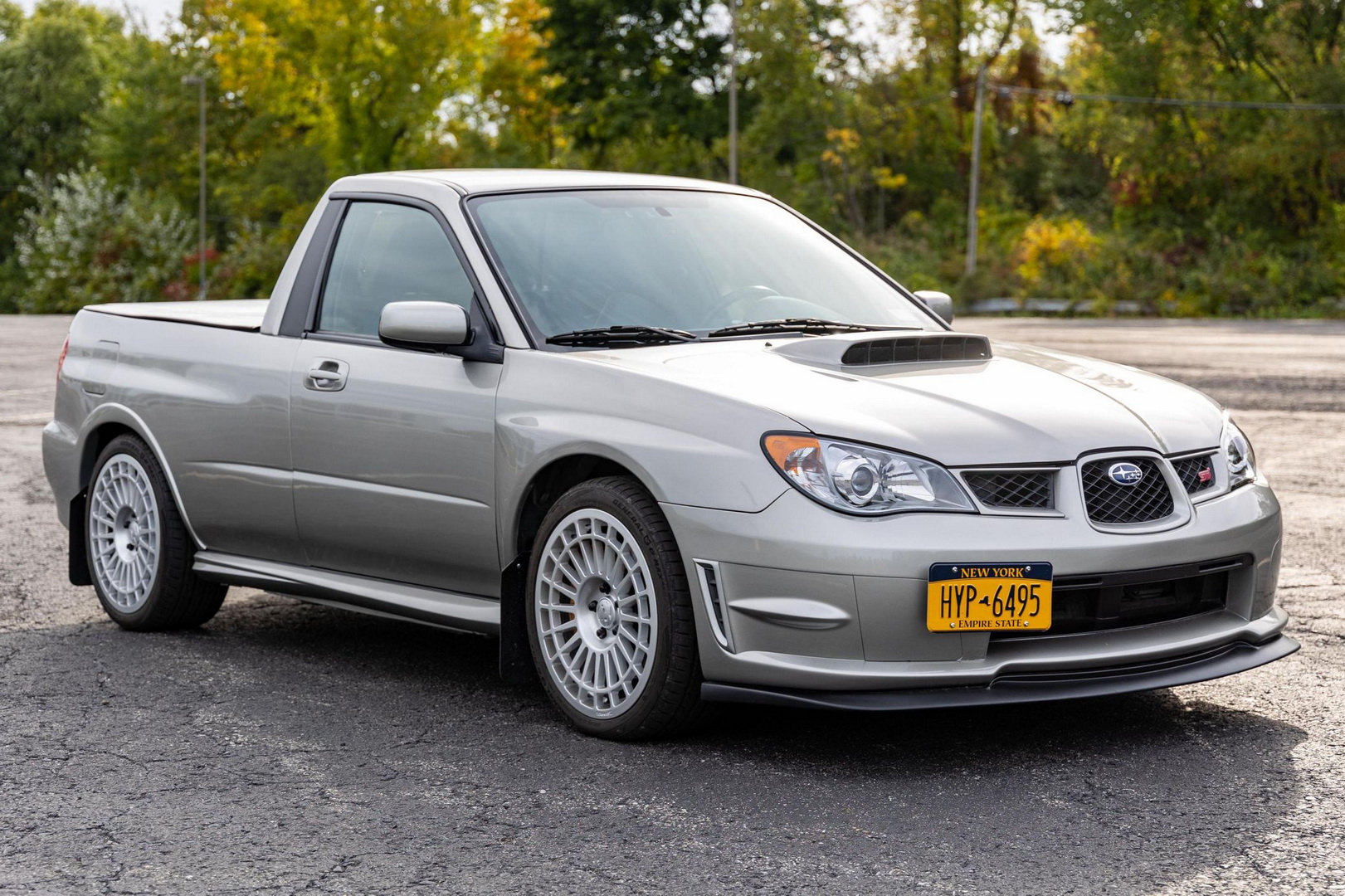Pickup Trucks With Sleepers: Your Comprehensive Guide to Mobile Living and Working pickup.truckstrend.com
In an increasingly mobile world, the lines between work, travel, and personal space are blurring. For many, the desire for independence, cost-effective travel, or even a flexible mobile office has led to innovative solutions. Among these, the "pickup truck with a sleeper" has emerged as a versatile and practical option, offering a unique blend of rugged utility and comfortable, compact living. Far from being a niche concept, these setups are gaining traction among adventurers, long-haul professionals, and those seeking a minimalist, on-the-go lifestyle.
At its core, a pickup truck with a sleeper is a standard pickup truck that has been modified or outfitted to include a dedicated sleeping area, often accompanied by basic amenities for extended stays. Unlike a full-sized RV or a dedicated commercial sleeper cab, these setups leverage the inherent versatility of a pickup, offering greater maneuverability, lower operating costs, and the ability to traverse more challenging terrain. This guide will delve into everything you need to know about transforming your pickup into a personal mobile haven.
Pickup Trucks With Sleepers: Your Comprehensive Guide to Mobile Living and Working
What Exactly Are Pickup Trucks With Sleepers?
When we talk about pickup trucks with sleepers, we’re generally referring to two main configurations:
- Truck Campers (Slide-in Campers): These are self-contained recreational vehicle units designed to be loaded onto the bed of a pickup truck. They come in various sizes, from basic pop-up models that fit short beds to larger, hard-sided units that extend over the cab and sides, offering amenities like kitchens, bathrooms, and dedicated sleeping areas. Once loaded, they transform the truck into a mobile living space, but can also be removed when the truck is needed for hauling.
- Custom Bed-Mounted Sleepers or Modified Truck Caps: This category encompasses more DIY or custom-built solutions. It often involves installing a sleeping platform and storage within a standard truck bed, sometimes under a high-rise truck cap or shell. These setups prioritize simplicity, stealth, and customization, allowing owners to tailor the space precisely to their needs, whether it’s a minimalist sleeping pad for weekend trips or a more elaborate build with insulation, power, and storage for extended travel.
While commercial semi-trucks feature integrated sleeper cabs directly behind the main cabin, this is almost non-existent for standard consumer pickup trucks. The "sleeper" in a pickup context is virtually always an aftermarket addition or modification to the bed area.
Why Choose a Pickup Truck With a Sleeper?

The appeal of a pickup truck with a sleeper lies in its unique balance of advantages:
- Cost-Effectiveness: Compared to purchasing a dedicated RV or travel trailer, outfitting a pickup truck with a sleeper can be significantly more affordable, especially if you already own a suitable truck. Operating costs like fuel and insurance are also generally lower.
- Maneuverability & Accessibility: Pickups are inherently more agile than larger RVs, making them easier to navigate through city streets, park in standard spots, and access off-road trails or remote campsites that larger vehicles can’t reach.
- Versatility: The ability to remove a slide-in camper or reconfigure a custom bed setup means your truck can easily revert to its utility role for hauling, towing, or daily commuting. This flexibility is a major advantage for those who don’t need a full-time RV.
- Stealth & Simplicity: Especially with custom bed builds under a cap, a sleeper pickup can often blend in, making it ideal for urban stealth camping or low-profile travel where a large RV might draw unwanted attention.
- Freedom & Independence: For long-haul workers, remote site supervisors, or avid adventurers, a sleeper pickup offers unparalleled freedom to travel, work, and sleep wherever the road takes them, without the need for hotels or fixed accommodations.
- Durability & Off-Road Capability: Many pickups, particularly 4×4 models, are built for rugged conditions, making them ideal platforms for exploring remote areas where traditional RVs dare not tread.

Types of Sleeper Setups for Pickup Trucks

Understanding the different ways to create a sleeper in a pickup is crucial for choosing the right path:
1. Slide-in Truck Campers
These are the most common and robust "sleeper" solutions for pickups.
- Pop-up Campers: Lighter and more aerodynamic, these expand vertically when set up, offering standing room and ventilation. They are great for off-roading due to their lower profile.
- Hard-Sided Campers: Offer better insulation, more permanent amenities (bathroom, kitchen), and greater security. They are heavier and raise the truck’s center of gravity.
- Manufacturers: Brands like Lance, Arctic Fox, Four Wheel Campers, Northwood, and Palomino are popular.
2. Truck Caps/Shells with Interior Builds
A more minimalist and customizable approach.
- Basic Sleeping Platform: Simply building a raised platform in the bed, allowing for storage underneath and a mattress on top.
- Integrated Storage & Systems: More advanced builds can include drawers, cabinets, electrical systems (solar, battery), and even small sinks, all contained within the truck cap.
- Materials: Plywood, 80/20 aluminum extrusions, and various insulation types are common.
3. Custom Fabrication & Specialty Units
- Flatbed Campers: Some enthusiasts convert their truck to a flatbed to accommodate larger, more rectangular custom living units that wouldn’t fit in a standard bed.
- Dedicated "Habitat" Units: Companies like AT Overland Equipment or GFC (Go Fast Campers) offer integrated tent/camper systems that replace the truck cap entirely, providing a pop-up sleeping area and versatile storage.
Key Considerations When Choosing or Building a Sleeper Pickup
Embarking on the sleeper pickup journey requires careful planning:
- Truck Compatibility (Payload & Towing): This is paramount. Truck campers are heavy. Ensure your truck’s payload capacity (found on the door jamb sticker) can safely handle the weight of the camper plus all your gear, water, and passengers. Heavy-duty trucks (F-250/350, Ram 2500/3500, Silverado/Sierra 2500/3500) are often necessary for larger hard-sided campers.
- Sleeper Size & Weight: Match the camper or build size to your truck’s bed length (short bed, standard bed, long bed). Be realistic about the weight, as exceeding your payload capacity is dangerous and illegal.
- Amenities vs. Minimalism: Decide what’s essential. Do you need a toilet, shower, kitchen, heater, AC? Or is a simple sleeping space with storage enough? Each amenity adds weight, complexity, and cost.
- Budget: Costs can range from a few hundred dollars for a DIY sleeping platform to over $50,000 for a new, fully-loaded truck camper. Factor in the cost of the truck itself, the sleeper unit, and any necessary modifications (suspension upgrades, larger tires, auxiliary batteries).
- Climate Control: Consider insulation, ventilation (fans, windows), and heating/cooling options (diesel heater, portable AC) for comfort in various weather conditions.
- Power Management: How will you charge devices, run lights, or power appliances? Solar panels, auxiliary battery systems, and shore power hookups are common solutions.
- Water & Waste: If you plan on having a sink or shower, you’ll need fresh water tanks and grey/black water holding tanks, which add significant weight and require dumping.
- Security: How will you secure your belongings and yourself while sleeping? Reinforced locks, alarm systems, and privacy covers are important.
- Legalities & Regulations: Be aware of vehicle height, width, and weight restrictions in areas you plan to travel. Some states have specific rules for truck campers.
Building or Modifying Your Pickup for a Sleeper
Choosing the Right Truck
- Heavy-Duty is Preferred: For slide-in campers, a 3/4-ton (250/2500) or 1-ton (350/3500) pickup is highly recommended for safety and stability.
- Bed Length: Match the camper to your bed length. Long bed trucks offer more space and better weight distribution for larger campers.
- Suspension Upgrades: Airbags, heavier springs, or sway bars might be necessary to handle the increased weight and maintain stability, especially with heavier campers.
Installing a Slide-in Camper
- Tie-Downs: Secure the camper to the truck bed using sturdy tie-down systems (frame-mounted or bed-mounted).
- Center of Gravity: Load heavy items low and centered within the camper to maintain stability.
- Electrical Connection: Connect the camper’s electrical system to the truck’s battery for lights and appliances.
DIY Sleeper Builds Under a Truck Cap
- Design & Planning: Sketch out your layout. Consider bed dimensions, storage needs, and access.
- Insulation: Use rigid foam boards, spray foam, or insulation mats to regulate temperature.
- Ventilation: Install roof vents or fans to prevent condensation and provide airflow.
- Sleeping Platform: Build a sturdy platform using plywood and 2x4s or aluminum extrusions. Ensure it’s level and comfortable.
- Storage: Integrate drawers, cubbies, or shelving units for efficient organization.
- Power: Install a secondary battery (deep cycle or lithium) charged by solar panels, the truck’s alternator, or shore power. Add USB ports, 12V outlets, and possibly an inverter for AC power.
Practical Tips for Life on the Road with a Sleeper Pickup
- Packing Smart: Maximize space with multi-functional items, collapsibles, and vertical storage. Only bring what you truly need.
- Finding Overnight Spots: Utilize apps like iOverlander, Campendium, or FreeRoam. Walmart, rest stops (check local regulations), and Bureau of Land Management (BLM) land are common options. Always be respectful and leave no trace.
- Maintenance: Regularly check tire pressure (especially with a heavy load), fluid levels, and overall vehicle condition.
- Safety & Security: Be aware of your surroundings. Park in well-lit areas. Lock all doors and windows. Consider a small safe for valuables.
- Maximizing Comfort: Invest in a good mattress, quality bedding, and proper climate control. A small fan can make a huge difference. Blackout curtains are essential for privacy and light control.
- Embrace Flexibility: The beauty of a sleeper pickup is its adaptability. Be ready to change plans, explore detours, and enjoy the spontaneity of mobile living.
Challenges and Solutions
- Limited Space:
- Solution: Employ clever storage solutions (under-bed drawers, vertical organizers), multi-functional furniture (bench that converts to a table), and minimalist packing.
- Power Management:
- Solution: Invest in a robust solar setup with a large-capacity auxiliary battery (lithium is ideal but pricey). Monitor power consumption with a battery monitor.
- Climate Control:
- Solution: Excellent insulation is key. Combine with a powerful roof fan for ventilation, and consider a portable heater (propane, diesel) or small AC unit for extreme temperatures.
- Finding Suitable Parking/Camping:
- Solution: While more agile than RVs, sleeper pickups still need adequate space. Use camping apps, scout locations in advance, and always have a backup plan.
- Weight Management:
- Solution: Regularly weigh your fully loaded truck. Upgrade suspension components if necessary. Be mindful of water and gear weight.
Price Table: Components of Pickup Trucks With Sleepers
It’s important to note that "Pickup Trucks With Sleepers" are not a single, factory-produced item, but rather a combination of a truck and a living unit. Prices vary wildly based on new vs. used, features, and customization.
| Component Category | Description | Estimated Price Range (USD) |
|---|---|---|
| Pickup Truck | ||
| Used (Light-Duty) | Ford F-150, Chevy Silverado 1500, Ram 1500, Toyota Tundra/Tacoma, Nissan Frontier (suitable for lighter campers/DIY builds) | $10,000 – $35,000+ (depending on age, mileage, condition) |
| Used (Heavy-Duty) | Ford F-250/350, Chevy Silverado/Sierra 2500/3500, Ram 2500/3500 (recommended for most truck campers, better payload) | $20,000 – $60,000+ (depending on age, mileage, condition) |
| New (Light-Duty) | New models for lighter campers or DIY builds. | $35,000 – $70,000+ |
| New (Heavy-Duty) | New models for heavier truck campers, superior payload and towing. | $50,000 – $90,000+ (can exceed $100k for top trims) |
| Sleeper Unit | ||
| Used Truck Camper (Pop-up) | Basic sleeping, minimalist amenities, lower profile. | $5,000 – $15,000+ |
| New Truck Camper (Pop-up) | Lightweight, expandable, often good for off-road. | $15,000 – $40,000+ |
| Used Truck Camper (Hard-sided) | More amenities, better insulation, heavier. | $10,000 – $30,000+ |
| New Truck Camper (Hard-sided) | Full features (kitchen, bath, heating, AC), robust construction. | $25,000 – $60,000+ (luxury models can exceed $70,000) |
| Truck Cap/Shell (new) | For DIY builds. Basic fiberglass or aluminum. | $1,500 – $4,000+ |
| DIY Build Materials | Wood, insulation, wiring, battery, solar panels, fan, etc. (does not include labor) | $1,000 – $10,000+ (highly variable based on complexity and amenities) |
| Professional Custom Build | Interior build-out of a truck cap or full custom flatbed habitat. | $10,000 – $50,000+ (can be much higher for specialized builders) |
| Modifications & Accessories | ||
| Suspension Upgrades | Airbags, heavy-duty springs, sway bars (for heavy campers). | $500 – $3,000+ |
| Solar Power System | Panels, charge controller, inverter, auxiliary battery. | $500 – $5,000+ (depending on capacity and battery type – e.g., lithium is more expensive) |
| Tie-Down Systems | Essential for securing truck campers. | $300 – $1,000+ |
| Other Accessories | Portable toilet, stove, fridge, water tank, heater, AC, etc. | $100 – $5,000+ (depending on quality and quantity) |
| Total Estimated Cost | (Truck + Sleeper + Basic Mods) | From ~$11,500 (used light-duty truck + basic DIY build) to over $150,000+ (new heavy-duty truck + luxury hard-sided camper/custom build) |
Frequently Asked Questions (FAQ) About Pickup Trucks With Sleepers
Q1: Is it legal to sleep in my pickup truck on the side of the road?
A1: Legality varies widely by jurisdiction. In many areas, "dispersed camping" is allowed on public lands (like BLM land in the US) or in designated rest areas. However, urban areas often have ordinances against sleeping in vehicles. Always check local regulations, signage, and use apps like iOverlander to find approved spots.
Q2: What’s the biggest challenge of having a sleeper in a pickup?
A2: Space constraints and payload capacity are often the biggest challenges. Balancing the desire for amenities with the physical limitations of the truck and the need to stay within safe weight limits requires careful planning.
Q3: Can I tow a trailer if I have a truck camper in my bed?
A3: Yes, this is a common setup, often called "double-towing." However, it requires a very capable truck (usually a 1-ton or larger) to handle the combined weight of the camper and the trailer’s tongue weight. Always ensure you stay within your truck’s Gross Combined Vehicle Weight Rating (GCVWR) and local towing laws.
Q4: How do I manage electricity for lights, charging, and appliances?
A4: Most setups utilize a secondary "house" battery system, isolated from the truck’s starting battery. This battery can be charged by solar panels on the roof, a DC-to-DC charger connected to the truck’s alternator, or a shore power hookup when available. An inverter converts 12V DC power to 120V AC for standard household appliances.
Q5: Are pickup truck sleepers safe from theft or break-ins?
A5: While no setup is 100% theft-proof, modern truck campers come with secure locking mechanisms. For custom builds, reinforcing doors/windows and adding alarms can increase security. Always be mindful of where you park and avoid leaving valuables in plain sight.
Q6: What’s the difference between a pop-up and a hard-sided truck camper?
A6: Pop-up campers have a lower profile for better aerodynamics and off-road clearance, expanding vertically when set up. They are lighter but offer less insulation. Hard-sided campers are rigid, offer superior insulation, more permanent amenities (like full bathrooms), but are heavier and have a higher center of gravity.
Conclusion
Pickup trucks with sleepers represent a compelling solution for those who crave the freedom of the open road without the bulk and expense of a traditional RV. Whether you opt for the convenience of a factory-built truck camper or the personalized touch of a custom DIY build, the possibilities for mobile living and working are vast. By carefully considering your needs, understanding the technical limitations of your vehicle, and embracing the practicalities of compact living, you can transform your trusty pickup into a versatile, comfortable, and independent base for all your adventures. The journey awaits, and with a sleeper pickup, you’re always ready to go.


